Boxing

 05-09-2024
05-09-2024
 Essay Writing Web
Essay Writing Web
Introduction to Boxing:
Boxing is a combat sport in which two individuals face off in a ring, using only their fists to strike each other while wearing padded gloves. The objective is to land clean punches on the opponent while avoiding incoming blows. Matches are typically divided into timed rounds, and the winner is determined either by knockout, where one boxer is rendered unable to continue, or by points awarded based on the number and quality of punches landed.
Historically, boxing dates back thousands of years, with evidence of the sport appearing in ancient Egypt, Greece, and Rome. However, the modern form of boxing, governed by a strict set of rules, developed in England during the 18th century with the introduction of the Marquess of Queensberry Rules. These rules established standardized regulations such as weight divisions, round durations, and the use of gloves.
Over the centuries, boxing has evolved from a brutal, bare-knuckle contest to a refined sport that demands a combination of physical strength, agility, mental toughness, and technical skill. Today, it is one of the most popular combat sports worldwide, with professional and amateur competitions held globally, including prestigious events like the Olympic Games and world championships.
Boxing has not only produced some of the most iconic athletes in sports history but also made a significant cultural impact, symbolizing themes of struggle, perseverance, and triumph. From local gyms to massive arenas, the sport continues to captivate audiences and inspire generations of athletes.
Boxing Equipment List:
 Boxing Gloves
Boxing Gloves
 Hand Wraps
Hand Wraps
 Mouthguard
Mouthguard
 Headgear
Headgear
 Boxing Shoes
Boxing Shoes
 Groin Guard and Chest Protector
Groin Guard and Chest Protector
 Punching Bags
Punching Bags
 Jump Rope
Jump Rope
 Focus Mitts and Pads
Focus Mitts and Pads
 Protective Vest (for body sparring)
Protective Vest (for body sparring)
1. Boxing Gloves:
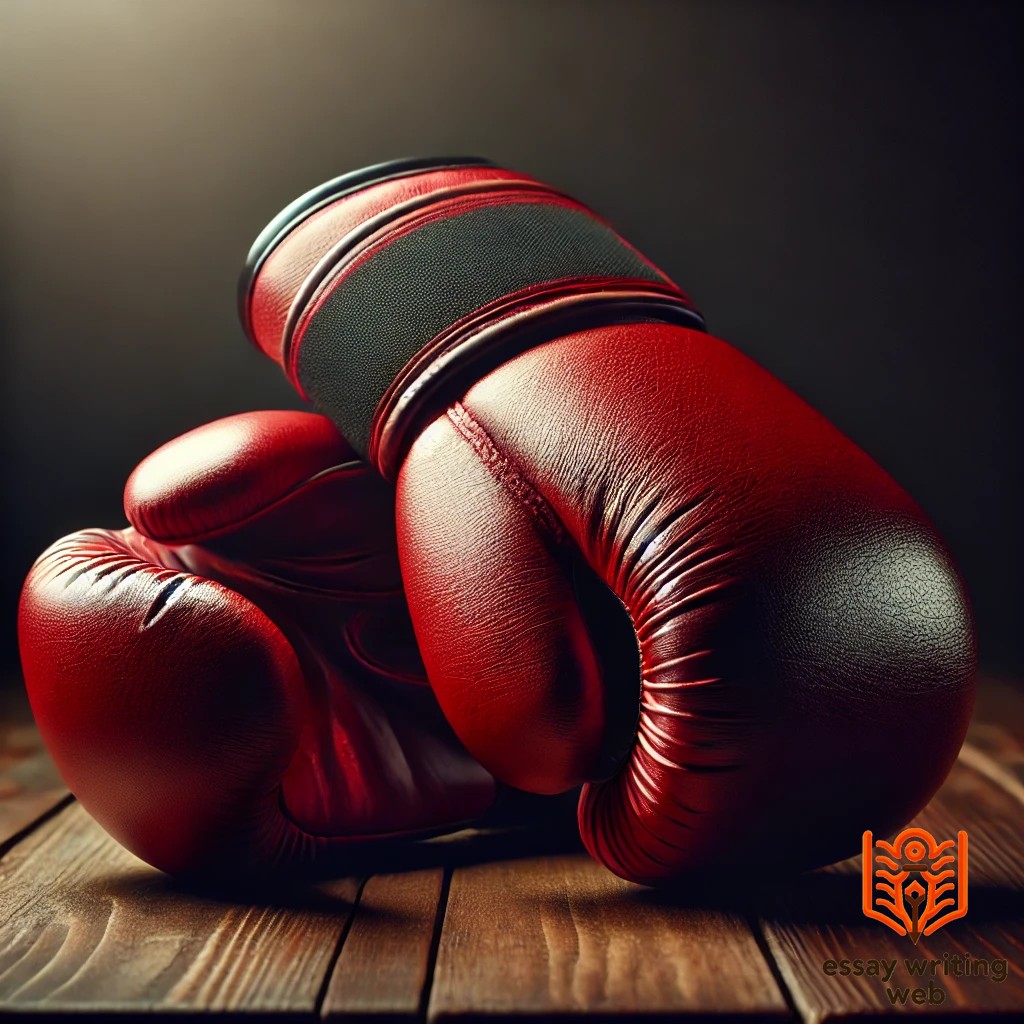
 Purpose: Gloves are perhaps the most recognizable piece of boxing equipment. Their primary purpose is to protect the boxer’s hands and wrists while reducing the impact of punches on the opponent.
Purpose: Gloves are perhaps the most recognizable piece of boxing equipment. Their primary purpose is to protect the boxer’s hands and wrists while reducing the impact of punches on the opponent.
 Types: There are various types of gloves, such as training gloves, sparring gloves, and competition gloves, each designed for specific uses. Training gloves are typically heavier to condition the boxer’s arms, while competition gloves are lighter to allow faster punches.
Types: There are various types of gloves, such as training gloves, sparring gloves, and competition gloves, each designed for specific uses. Training gloves are typically heavier to condition the boxer’s arms, while competition gloves are lighter to allow faster punches.
2. Hand Wraps:
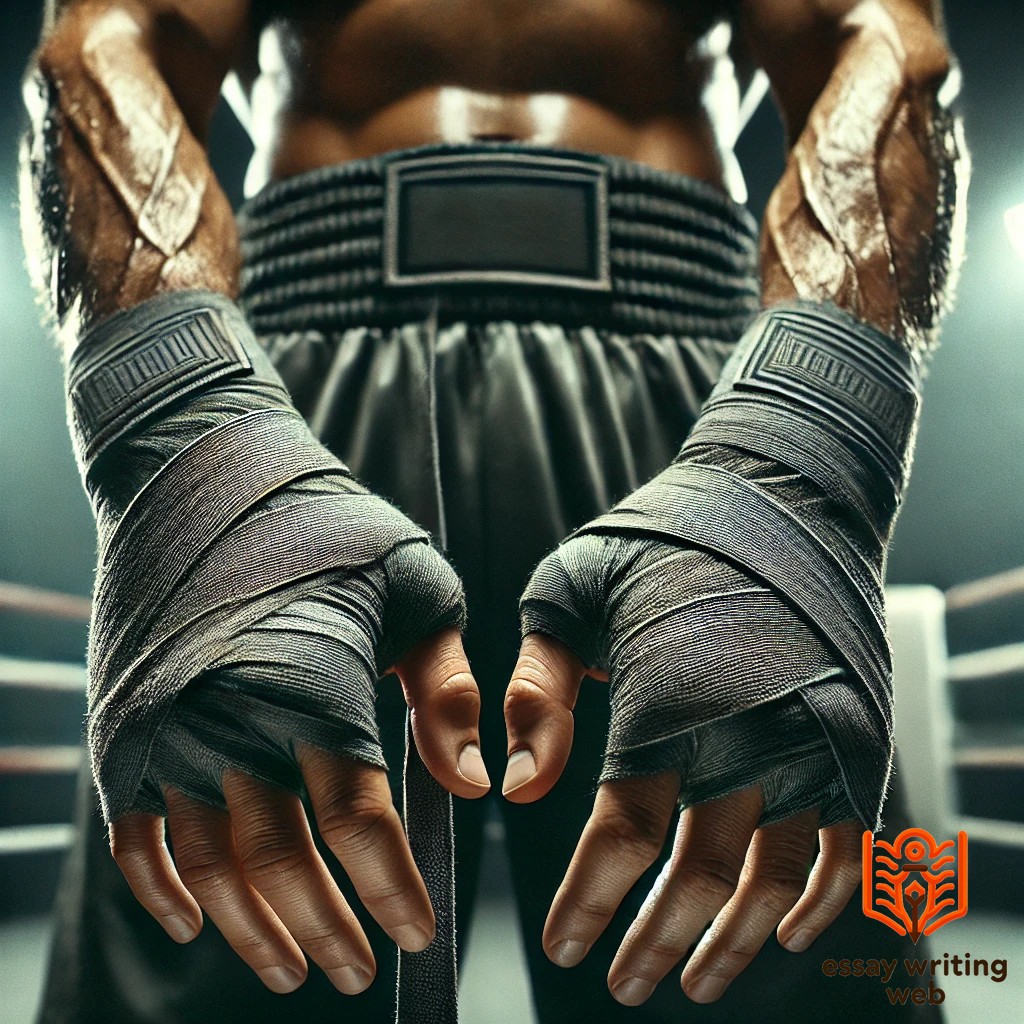
 Purpose: Hand wraps are worn underneath the gloves to protect the bones and tendons in the hands and wrists from injury. They provide additional support by keeping the hands tightly secured during punches.
Purpose: Hand wraps are worn underneath the gloves to protect the bones and tendons in the hands and wrists from injury. They provide additional support by keeping the hands tightly secured during punches.
 Types: There are two main types of hand wraps: traditional wraps, which are long cloth strips, and quick wraps, which are slip-on wraps that can be worn more quickly.
Types: There are two main types of hand wraps: traditional wraps, which are long cloth strips, and quick wraps, which are slip-on wraps that can be worn more quickly.
3. Mouthguard:

 Purpose: A mouthguard is essential for protecting the boxer’s teeth, gums, and jaw during training and matches. It absorbs shock from blows to the face and helps prevent concussions by cushioning the impact on the jaw.
Purpose: A mouthguard is essential for protecting the boxer’s teeth, gums, and jaw during training and matches. It absorbs shock from blows to the face and helps prevent concussions by cushioning the impact on the jaw.
 Generic vs. Custom : Custom mouthguards, made to fit the athlete's teeth, offer superior protection compared to generic ones.
Generic vs. Custom : Custom mouthguards, made to fit the athlete's teeth, offer superior protection compared to generic ones.
4. Headgear:

 Purpose: Headgear is worn during sparring sessions and amateur competitions to reduce the risk of cuts, bruises, and other facial injuries. While it doesn’t prevent concussions, it provides extra cushioning to protect the head.
Purpose: Headgear is worn during sparring sessions and amateur competitions to reduce the risk of cuts, bruises, and other facial injuries. While it doesn’t prevent concussions, it provides extra cushioning to protect the head.
 Types: Different styles of headgear cover varying portions of the head, some focusing more on cheek and jaw protection, while others prioritize overall head coverage.
Types: Different styles of headgear cover varying portions of the head, some focusing more on cheek and jaw protection, while others prioritize overall head coverage.
5. Boxing Shoes:
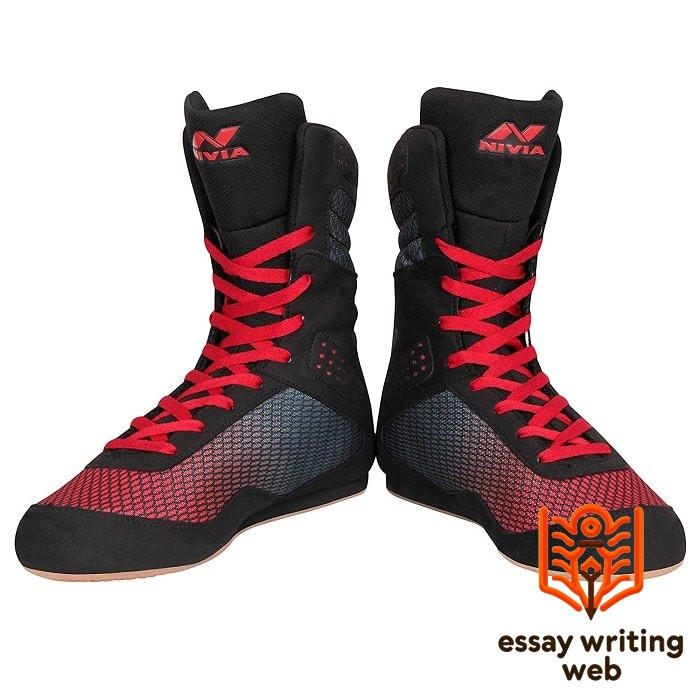
 Purpose: Boxing shoes are designed to enhance footwork, speed, and balance. These lightweight shoes offer ankle support and grip the canvas to allow for swift lateral movements without slipping.
Purpose: Boxing shoes are designed to enhance footwork, speed, and balance. These lightweight shoes offer ankle support and grip the canvas to allow for swift lateral movements without slipping.
 Types: Low-cut shoes provide more freedom of movement, while mid-cut shoes offer better ankle support.
Types: Low-cut shoes provide more freedom of movement, while mid-cut shoes offer better ankle support.
6. Groin Guard and Chest Protector:
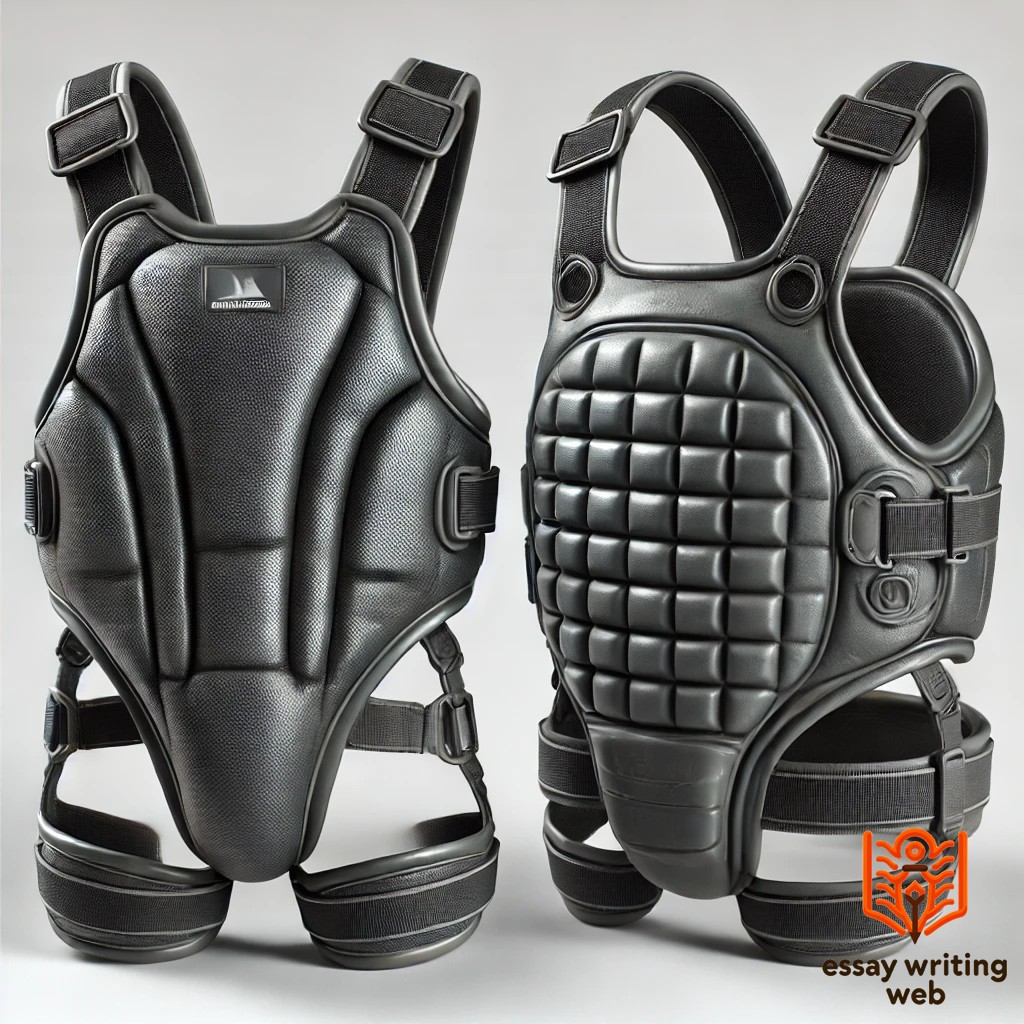
 Purpose: A groin guard is worn by male boxers to protect the groin area from accidental low blows. Female boxers may use chest protectors for added safety during training and competition.
Purpose: A groin guard is worn by male boxers to protect the groin area from accidental low blows. Female boxers may use chest protectors for added safety during training and competition.
 Features: These protective gear pieces are lightweight and padded to absorb impact while allowing full movement.
Features: These protective gear pieces are lightweight and padded to absorb impact while allowing full movement.
7. Punching Bags:
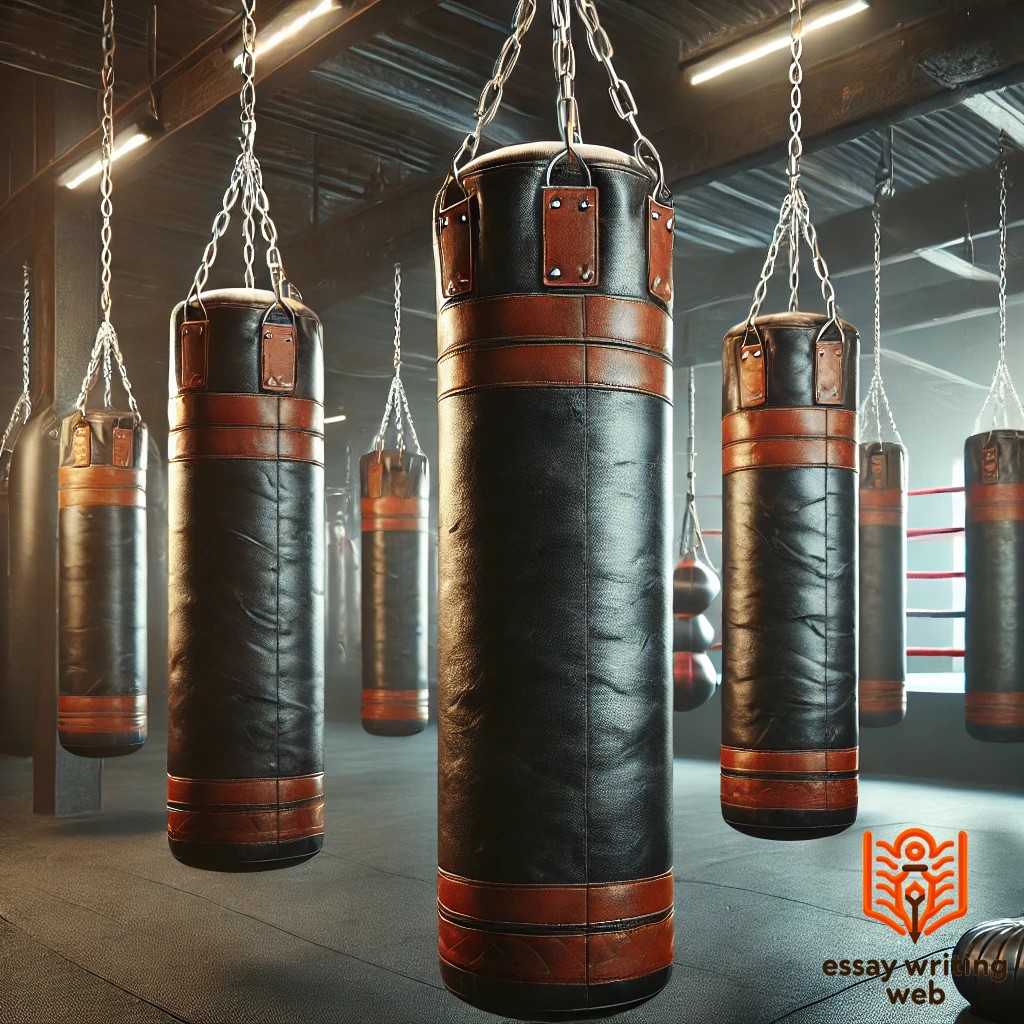
 Types: There are different types of punching bags used in training, including heavy bags, speed bags, and double-end bags.
Types: There are different types of punching bags used in training, including heavy bags, speed bags, and double-end bags.
 Heavy Bag: Used for developing punching power, endurance, and technique.
Heavy Bag: Used for developing punching power, endurance, and technique.
 Speed Bag: Enhances hand-eye coordination, speed, and rhythm.
Speed Bag: Enhances hand-eye coordination, speed, and rhythm.
 Double-End Bag: A small, quick-moving bag that helps improve timing, accuracy, and reflexes.
Double-End Bag: A small, quick-moving bag that helps improve timing, accuracy, and reflexes.
8. Jump Rope:
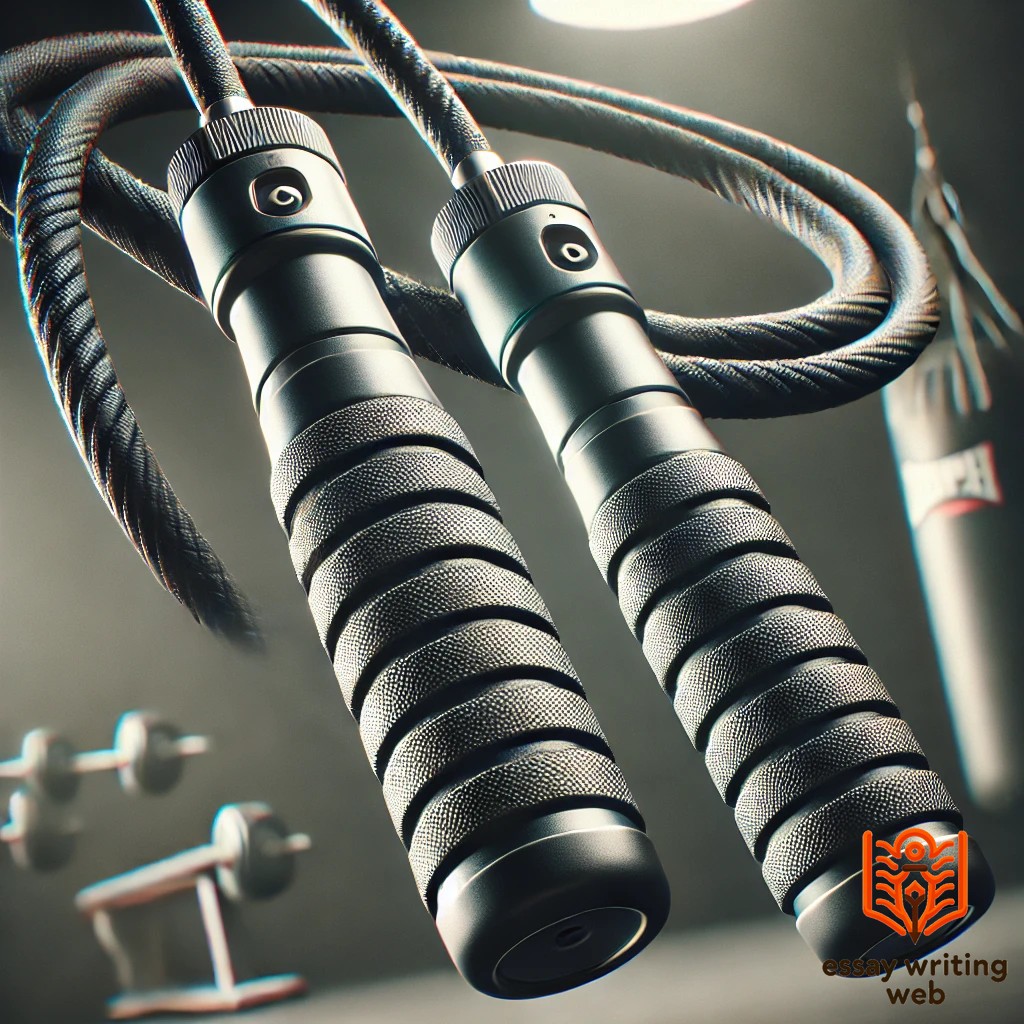
 Purpose: The jump rope is a staple in any boxer’s training regimen. It helps improve cardiovascular endurance, footwork, and coordination. Skipping rope exercises are integral to building stamina and agility.
Purpose: The jump rope is a staple in any boxer’s training regimen. It helps improve cardiovascular endurance, footwork, and coordination. Skipping rope exercises are integral to building stamina and agility.
9. Focus Mitts and Pads:
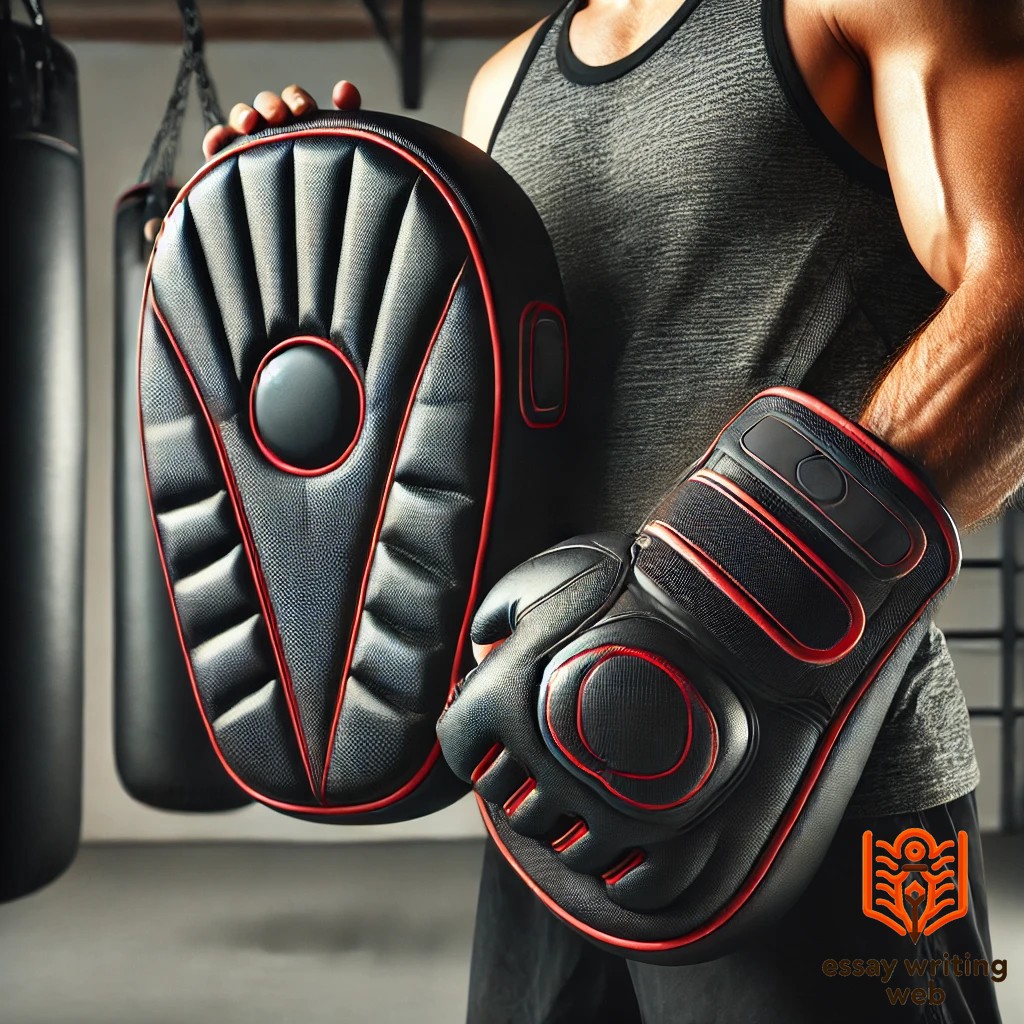
 Purpose: Focus mitts and pads are used by trainers to help boxers work on accuracy, combination punches, and defensive techniques. They allow for precise drills that simulate real fight scenarios.
Purpose: Focus mitts and pads are used by trainers to help boxers work on accuracy, combination punches, and defensive techniques. They allow for precise drills that simulate real fight scenarios.
10. Protective Vest (for body sparring)
-uCByS.png)
 Purpose: A protective vest is often worn during body sparring sessions to shield the torso from hard punches. It allows boxers to practice body shots without causing injury to the sparring partner.
Purpose: A protective vest is often worn during body sparring sessions to shield the torso from hard punches. It allows boxers to practice body shots without causing injury to the sparring partner.
Popular Terms in Boxing :
 Jab – A quick, straight punch that is typically used to set up more powerful strikes. It is often used to keep the opponent at a distance and disrupt their rhythm.
Jab – A quick, straight punch that is typically used to set up more powerful strikes. It is often used to keep the opponent at a distance and disrupt their rhythm.
 Cross – A powerful punch thrown with the rear hand, usually delivered straight across the body. It's a major weapon for most fighters and often follows a jab.
Cross – A powerful punch thrown with the rear hand, usually delivered straight across the body. It's a major weapon for most fighters and often follows a jab.
 Hook – A punch that is thrown in a circular motion aimed at the side of an opponent’s head or body. It can be delivered with either hand and is known for its knockout potential.
Hook – A punch that is thrown in a circular motion aimed at the side of an opponent’s head or body. It can be delivered with either hand and is known for its knockout potential.
 Uppercut – A punch that is delivered upwards, usually targeting the opponent’s chin. It is often used at close range and can be devastating if it lands cleanly.
Uppercut – A punch that is delivered upwards, usually targeting the opponent’s chin. It is often used at close range and can be devastating if it lands cleanly.
 Southpaw – Refers to a fighter who leads with their right hand and right foot forward, the opposite of the traditional orthodox stance. It can create awkward angles for opponents.
Southpaw – Refers to a fighter who leads with their right hand and right foot forward, the opposite of the traditional orthodox stance. It can create awkward angles for opponents.
 Orthodox Stance – The most common stance in boxing, where a fighter leads with their left hand and left foot, with the right hand used for powerful punches like the cross.
Orthodox Stance – The most common stance in boxing, where a fighter leads with their left hand and left foot, with the right hand used for powerful punches like the cross.
 Combination – A sequence of punches thrown in quick succession, often mixing different types of punches like jabs, hooks, and uppercuts to overwhelm the opponent.
Combination – A sequence of punches thrown in quick succession, often mixing different types of punches like jabs, hooks, and uppercuts to overwhelm the opponent.
 Slip – A defensive move where a boxer moves their head to the side to avoid an incoming punch. It helps avoid taking damage while staying close to the opponent.
Slip – A defensive move where a boxer moves their head to the side to avoid an incoming punch. It helps avoid taking damage while staying close to the opponent.
 Weave – A movement where the boxer bends their body and moves it underneath an incoming punch, usually to set up a counterattack.
Weave – A movement where the boxer bends their body and moves it underneath an incoming punch, usually to set up a counterattack.
 Counterpunch – A punch thrown immediately after the opponent has missed their punch. It’s a highly strategic move that takes advantage of the opponent’s vulnerability after they miss.
Counterpunch – A punch thrown immediately after the opponent has missed their punch. It’s a highly strategic move that takes advantage of the opponent’s vulnerability after they miss.
 Feint – A deceptive move where a boxer pretends to throw a punch or move in a particular direction to trick the opponent into reacting, creating openings for real attacks.
Feint – A deceptive move where a boxer pretends to throw a punch or move in a particular direction to trick the opponent into reacting, creating openings for real attacks.
 Clinch – A situation where both fighters grab hold of each other to avoid punches and regain energy. The referee usually steps in to break up a clinch.
Clinch – A situation where both fighters grab hold of each other to avoid punches and regain energy. The referee usually steps in to break up a clinch.
 Knockout (KO) – When a fighter is hit and cannot get up within a count of ten, resulting in an immediate end to the fight.
Knockout (KO) – When a fighter is hit and cannot get up within a count of ten, resulting in an immediate end to the fight.
 Technical Knockout (TKO) – When a fight is stopped by the referee or the ringside doctor because a fighter is unable to continue due to injury, even if they haven’t been knocked out.
Technical Knockout (TKO) – When a fight is stopped by the referee or the ringside doctor because a fighter is unable to continue due to injury, even if they haven’t been knocked out.
 Punching Power – A term used to describe the ability of a boxer to deliver punches with significant force, often leading to knockouts or visibly hurting their opponent.
Punching Power – A term used to describe the ability of a boxer to deliver punches with significant force, often leading to knockouts or visibly hurting their opponent.
International Boxing Association Countries:
 KAZAKHSTAN (KAZ)
KAZAKHSTAN (KAZ)
 UZBEKISTAN (UZB)
UZBEKISTAN (UZB)
 RUSSIA (RUS)
RUSSIA (RUS)
 INDIA (IND)
INDIA (IND)
 MOROCCO (MAR)
MOROCCO (MAR)
 CUBA (CUB)
CUBA (CUB)
 MEXICO (MEX)
MEXICO (MEX)
 BRAZIL (BRA)
BRAZIL (BRA)
 ITALY (ITA)
ITALY (ITA)
 TURKIYE (TUR)
TURKIYE (TUR)
 ALGERIA (ALG)
ALGERIA (ALG)
 UNITED STATES OF AMERICA (USA)
UNITED STATES OF AMERICA (USA)
 SPAIN (ESP)
SPAIN (ESP)
 MOZAMBIQUE (MOZ)
MOZAMBIQUE (MOZ)
 THAILAND (THA)
THAILAND (THA)
 DEMOCRATIC REP OF THE CONGO (COD)
DEMOCRATIC REP OF THE CONGO (COD)
 COLOMBIA (COL)
COLOMBIA (COL)
 JAPAN (JPN)
JAPAN (JPN)
 ARMENIA (ARM)
ARMENIA (ARM)
 CHINESE TAIPEI (TPE)
CHINESE TAIPEI (TPE)
 FRANCE (FRA)
FRANCE (FRA)
 MONGOLIA (MGL)
MONGOLIA (MGL)
 CANADA (CAN)
CANADA (CAN)
 BULGARIA (BUL)
BULGARIA (BUL)
 UKRAINE (UKR)
UKRAINE (UKR)
 IRELAND (IRL)
IRELAND (IRL)
 CAMEROON (CMR)
CAMEROON (CMR)
 AZERBAIJAN (AZE)
AZERBAIJAN (AZE)
 SERBIA (SRB)
SERBIA (SRB)
 JORDAN (JOR)
JORDAN (JOR)
 CHINA (CHN)
CHINA (CHN)
 ECUADOR (ECU)
ECUADOR (ECU)
 KENYA (KEN)
KENYA (KEN)
 GEORGIA (GEO)
GEORGIA (GEO)
 SOUTH AFRICA (RSA)
SOUTH AFRICA (RSA)
 AUSTRALIA (AUS)
AUSTRALIA (AUS)
 DOMINICAN REP. (DOM)
DOMINICAN REP. (DOM)
 POLAND (POL)
POLAND (POL)
 VENEZUELA (VEN)
VENEZUELA (VEN)
 KYRGYZSTAN (KGZ)
KYRGYZSTAN (KGZ)
 PUERTO RICO (PUR)
PUERTO RICO (PUR)
 KOREA (KOR)
KOREA (KOR)
 TAJIKISTAN (TJK)
TAJIKISTAN (TJK)
 HUNGARY (HUN)
HUNGARY (HUN)
 ENGLAND (ENG)
ENGLAND (ENG)
 TRINIDAD & TOBAGO (TTO)
TRINIDAD & TOBAGO (TTO)
 PHILIPPINES (PHI)
PHILIPPINES (PHI)
 UGANDA (UGA)
UGANDA (UGA)
 GERMANY (GER)
GERMANY (GER)
 ZAMBIA (ZAM)
ZAMBIA (ZAM)
Boxing Formats:
1. Professional Boxing

Professional boxing is the most well-known format of the sport. In this format, fighters compete for titles and financial rewards. Professional bouts usually consist of 10 to 12 rounds, with each round lasting three minutes. There are various weight classes in professional boxing, and fighters aim to climb the ranks to earn titles in their respective divisions. Fighters use padded gloves, and the focus is on delivering clean punches while adhering to the rules. Professional boxing includes some of the biggest names and events in the sport, such as world championship fights and pay-per-view events.
2. Amateur Boxing

Amateur boxing is typically seen at the Olympic Games, Commonwealth Games, and other international sporting events. Unlike professional boxing, amateur bouts are shorter, usually consisting of three rounds of three minutes each. The primary focus is on technique and scoring points through clean, legal punches rather than knockouts. Amateur boxers wear headgear, and the scoring system emphasizes accuracy and defense over aggression. Amateur boxing is often a stepping stone for fighters aiming to turn professional.
3. Olympic Boxing
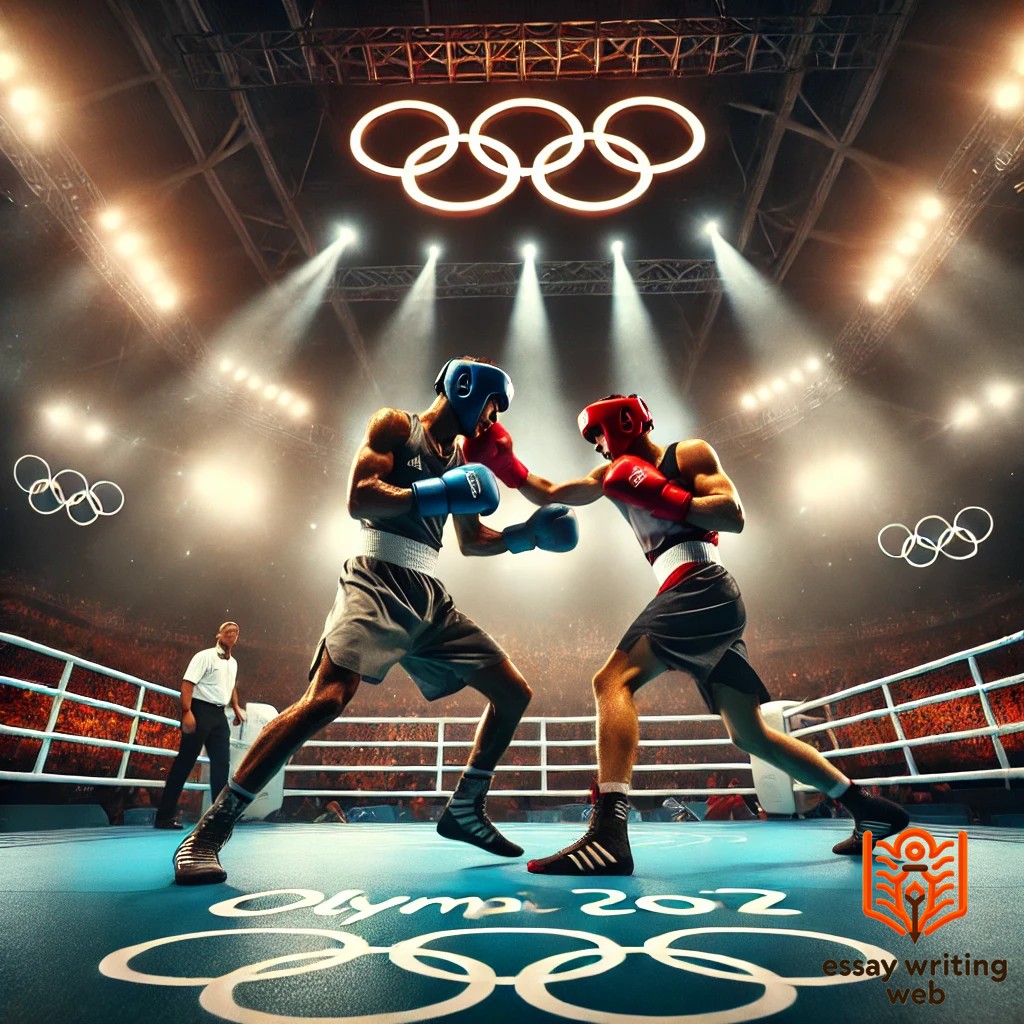
Olympic boxing falls under the category of amateur boxing, but it is distinct due to its global platform and prestige. Fighters compete in three-round matches with strict rules and point-based scoring. Headgear was previously mandatory in Olympic boxing, but recent changes have eliminated its use for men (though it remains for women). The main objective is to land clean punches on the opponent’s target areas, with an emphasis on speed, technique, and accuracy. Winning a medal in Olympic boxing is a significant achievement and often boosts a fighter's career.
4. Exhibition Boxing

Exhibition boxing is a format where fighters engage in non-competitive bouts, often for entertainment or charity purposes. These matches usually involve celebrities, retired professionals, or up-and-coming fighters looking to gain exposure. Exhibition bouts are typically shorter, and the emphasis is on providing entertainment rather than fierce competition. Judges may not score these fights, and knockouts are usually avoided. Exhibition boxing has gained popularity in recent years, with notable figures from different sports and entertainment industries stepping into the ring.
5. White Collar Boxing

 Essay Writing Web
Essay Writing Web

 05-09-2024
05-09-2024
 Essay Writing Web
Essay Writing Web









-uCByS.png)




